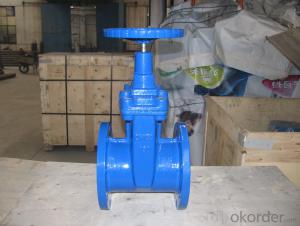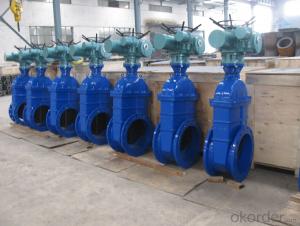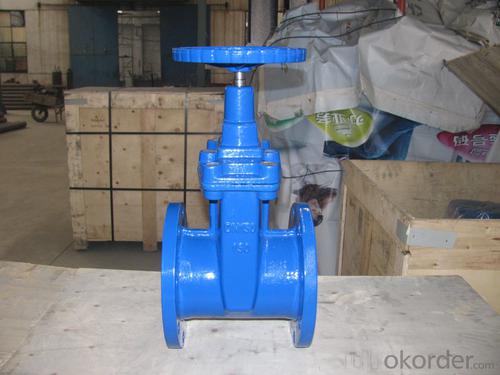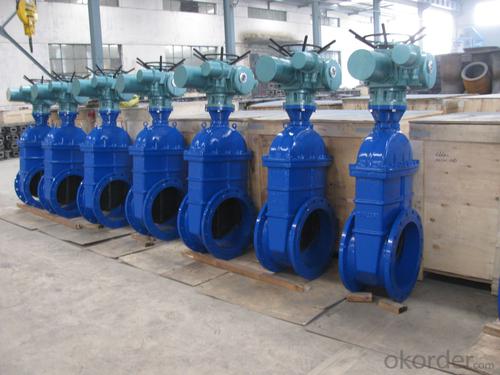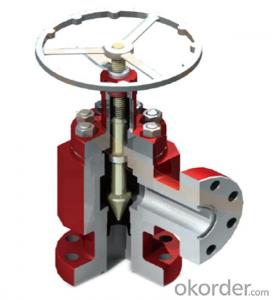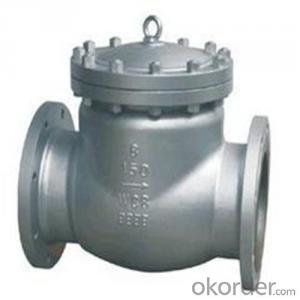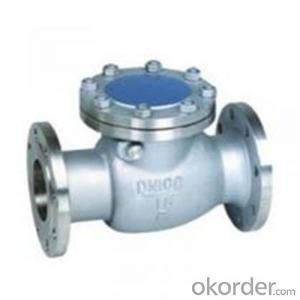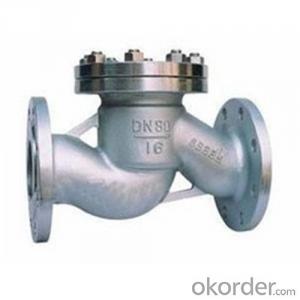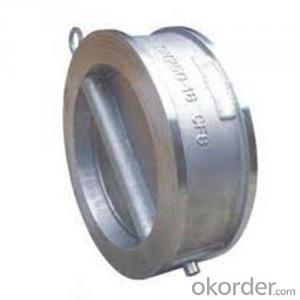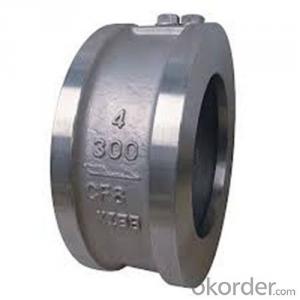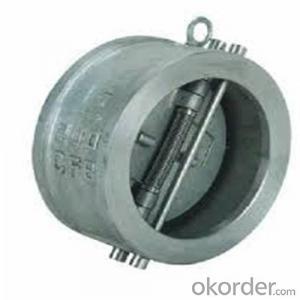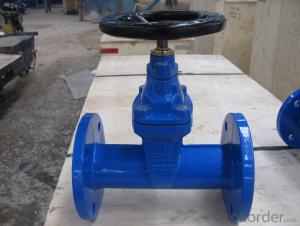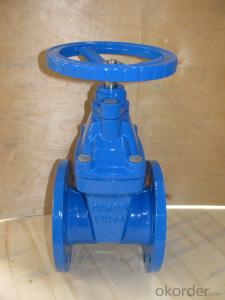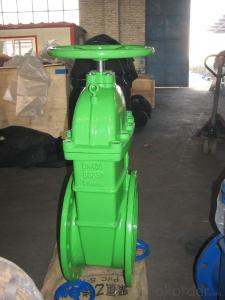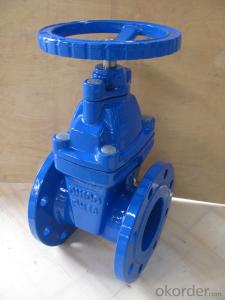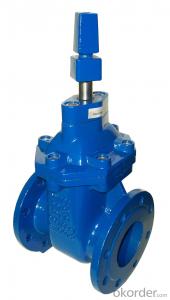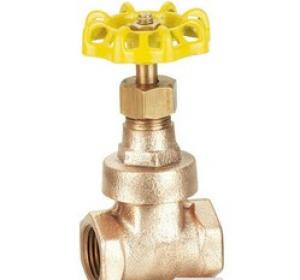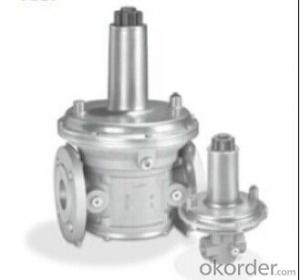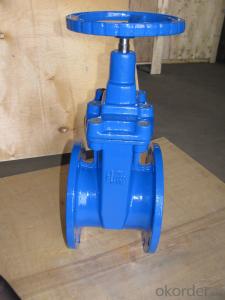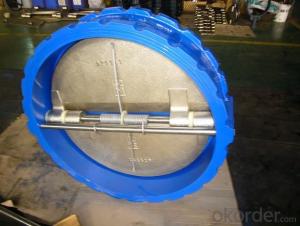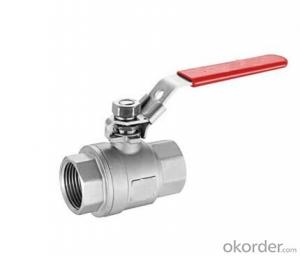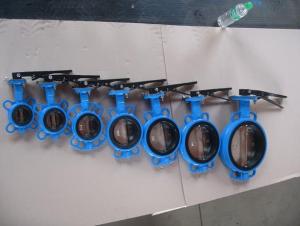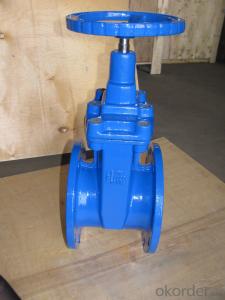Non-rising Stem Resilient Seated Gate ValveDIN3352
- Loading Port:
- China Main Port
- Payment Terms:
- TT OR LC
- Min Order Qty:
- -
- Supply Capability:
- -
OKorder Service Pledge
OKorder Financial Service
You Might Also Like
Type: | Non-Rising Stem |
Material: | Body: Cast Iron / Ductile Iron Wedge: Cast Iron / Ductile Iron Encapsulated with EPDM Seat: EPDM / NBR Shaft: SS410 Stem Nut: Brass O-ring: EPDM, NBR Wedge Nut: Brass / Bronze Hand Wheel: Ductile Iron
|
Operator: | Hand Wheel / Bevel Gearing / Square head / Electric actuator |
Face to Face: |
BS5163: 1986, DIN 3202 F4-F5, JIS B2002, ANSI B16.10
|
Flange: | BS4504, DIN 2532, JIS B2212, ANSI B16.10/ANSI B16.50
|
Working Pressure: | 16 Bar(200 PSI) |
Design and Manufacturer Standard : | BS5163, DIN 3352, JIS B2043 |
Test Standard: | API 598 BS6755 DIN 3230 JIS B2003 |
Application: | Water works, Sewage, Public facilties, Building industry, Petroleum, Chemical, Steel, Metallurgy, Paper Making Industry, Foods, Beverage, HVAC |
| | | | ||||||||
| | | | ||||||||
| | | | ||||||||
| | | | ||||||||
| | | | ||||||||
| | | | ||||||||
| | | | ||||||||
| | | | ||||||||
- Q: Is a leaky heart valve considered to be a form heart disease?
- Hello, Yes, it is. Obviously the leak is still within the arteries, - no blood is leaking out of the heart, - any leak is only in the backwards direction of blood-flow. One function of the valves is to stop blood which has just been pumped, from falling backwards again to where it came from. As soon as the pumping action stops, the valve has to close to lock the pumped-blood in its new forward position. If any blood leaks back through the closed valve, that is called regurgitation of blood, - and the closed valve which is leaking is described as incompetent or insufficient, in medical language. Sometimes newborn babies are born with a heart valve (or valves) that leak backwards, having not been properly formed in the womb, - or sometimes the valve (or valves) are damaged in adult life by some disease, - for example, infections like Rheumatic Fever or Syphilis, (both rare nowadays). I hope this is of some help. Best wishes, Belliger retired uk gp
- Q: My fiance needs his aortic valve replaced. He is 40 yrs old otherwise healthy. I am wondering how long he will be in surgery, how long he be in the hospital and any other info about having this surgery.
- This is major heart surgery that is done on bypass (cardiopulmonary bypass, meaning the heart and lung machine. This is very serious. He may be in the hospital for a week or more. He may need cardiac rehab to gradually be able to do simple things.
- Q: im just bored so heres my question who do you think is better valve games (hl2 tf2 css) or bungie games (halo) and why. whoever gives me the best reson gets best answer. personally i like valve
- 0.5 existence and 0.5 existence 2 are extra beneficial video games than Halo a million/2/3. whether im not a huge fan of the definitely gameplay in Valves video games. I choose Halo's engine over Valves. whether, Portal is an marvelous interest. That on my own places Valve over Bungie.
- Q: had a water heater put in after that i have low hot water pressure it get hot but goes to a low stream.when i try to adjust gate valve it keeps turning
- freeze the line coming to the valve, with a co2 fire extinguisher, or dry ice, then swap the valve, and let it thaw
- Q: I have a shut off valve under the sink that leaks when you try to turn it OFF. Why is that?I need to fix faucet leak as well. do i need to shut water off to fix faucet? Need to fix valve first. Cant figure out why valve leaks when turning off.
- Because the stem washer is worn out and needs replacing, you will have to shut off the water to the whole house and you might as well replace the shutoff, probably just about as cheap and a lot more reliable fix.
- Q: I have a lawn tractor with a 10 hp Tecumseh and its running so rich because of the carburetor float valve not seating. So how should I fix this?
- www.okorder
- Q: 1st valve: this valve used to never cause me trouble at all. THen, suddenly it would stick at the end of the press. I took it home, washed it, cleaned out the casing with the casing brush, cleaned out the holes with a mouthpiece brush, and wiped it clean. Then, i put a bit of oil and it worked fine. Then next morning, i took it out for a second and found it was sticking again. It worked fine afterthat, but why would a valve to that?2nd: this valve is very troublesome. It's sticky for no reason. i did the same thing as the first, but it stayed stuck3rd. Weird valve. One day, i dropped my trumpet (not like down the stairs or anything, just while sitting) and this valve just messed up. What happened, was that when the valve was screwed in all the way, it would be stuck. however, when i unscrewed halfwayor a little less it worked amazingly well. Can a slightly unscrewed valve affect your playing (aside from the clicking noise). Can a valve get dented, causing this?
- I think the reason why your valves are sticking is because they are building up sludge from being oiled too much, and yes, that does happen frequently. Remove the valves carefully, wipe them off thoroughly with a clean cloth, replace them correctly, and lightly oil them. Then try pushing the valves a bit before playing.
- Q: My washing machine had hot and cold water, but was leaking. I changed the inlet valve which stopped the leak, but now I have no hot water. When I put the setting on warm, the cold water runs for a bit. Then stops and no hot water comes. Any help?
- I suspect the leaking valve that was replaced was your washer's solenoid valve. Did you remember to turn the hot water supply valve on after you finished? That is the valve, next to the cold water supply valve, on/at the wall behind the washer. There are rubber hoses coming from those valves to the solenoid valves on your washer. If you forgot to turn it back on after replacing the leaking valve you'll get no water. If you turn off both the hot and cold supply valves on the wall you should be able to remove the rubber hoses right where they connect to the machine and check the water flow by directing them into a bucket or pan while you open the supply vales. If you have good pressure and flow make sure there is no debris clogging the screen, just inside there the hose connects to your machine. These can get blocked where the water won't pass or runs very slow. Sometimes it pays to check the simplest causes first. Good Luck. SS.
- Q: The time has come to re shim my 06 450, and I am having a small problem (I think anyway). The exhaust valves have decreased to below the required spec and need to be replaced with thinner shims (as is usually the case), but the left intake valve has for some reason increased its valve clearance (from 0.16mm to 0.23mm). Is it normal for the valve clearance to increase? I thought they would only decrease... Any ideas? Unless the valve is being held open by something. Many thanks, Jim
- You want to do a clearance do you? Blow up the car.
- Q: What exactly is a flow valve for an ice maker on a refrigerator? Any idea what it would cost to replace it? Is it easy to replace?
- sophisticated situation. look on to yahoo. just that can assist!
Send your message to us
Non-rising Stem Resilient Seated Gate ValveDIN3352
- Loading Port:
- China Main Port
- Payment Terms:
- TT OR LC
- Min Order Qty:
- -
- Supply Capability:
- -
OKorder Service Pledge
OKorder Financial Service
Similar products
Hot products
Hot Searches
Related keywords
